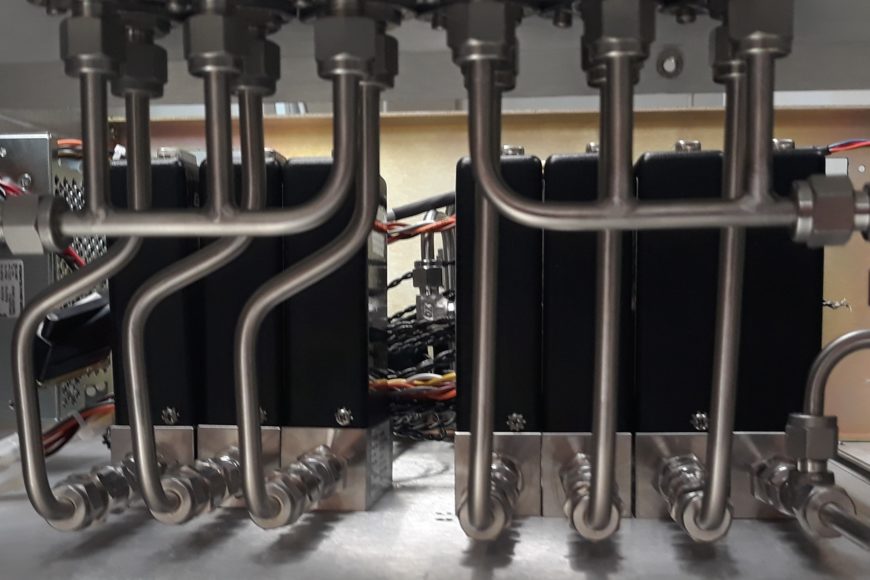
As the name might suggest, gas blenders are designed to mix different gases for academic, commercial, and industrial purposes. Sometimes referred to as blends, specific gas mixes are defined by the concentration of their constituent species; usually as a percentage, molar fraction, or a parts-per unit. Many applications require specified gas mixtures with finely controlled compositions; hence most gas blenders are used by manufacturers carrying out batch mixing.
Premixed cylinders can satisfy the demands of many end-users, but the cost of financial mark ups is always transferred to the consumer. This means it may cost more to buy premixtures from a manufacturer than to blend gases on-demand yourself. So, how do gas blenders actually work?
Basic Working Principles of Gas Blenders
Gas blenders are used in a wide range of applications and working environments. Naturally, that leads to some degree of technical variety. There are at least four mixing technologies of note, each of which differs based on how the flow of individual channels of gas are controlled to produce the desired mixture.
Mechanical Gas Blenders
Perhaps the simplest form of gas blending system, mechanical mixers use metering valves to control the flow of a few gas streams proportionally to one another. They are best suited to 2-gas mixtures, using two inlets connected by a piston chamber. Turning the valve reduces the flow of one gas and increases the flow of the other, resulting in a relative gas mix.
Electronic mixers work on the same basic principle, but the piston is driven by a motor rather than a manual valve, providing a nominal increase in precision. However, neither of these techniques provides the best accuracy nor repeatability.
Pneumatic Flow Controllers
Gas blenders based on pneumatic flow regulation are much more precise than electronic/mechanical mixers. They restrict the flow of each gas depending on its required concentration in the final mixture using a series of porous bodies with varying surface areas. This cost-efficient technique provides much higher quality gas blends with greater repeatability.
Mass Flow Controllers
Although different applications require technologies, gas blenders equipped with mass flow controllers (MFCs) typically offer the greatest accuracy and repeatability. Just like pneumatic regulators, they control the flow of individual gas streams but as a function of mass flow rather than volume. MFCs automatically control the flow rate of gases by monitoring the dissipation of thermal energy. A sensor tube integrated into the flow system measures the temperature up and downstream, generating an electrical signal proportional to the differential between the two. This provides an extremely precise measure of gas flow and is one of the most accurate technologies for gas mixing applications.
Gas Blenders from Environics
Environics® gas blenders automatically mix gases to produce accurate gas calibration standards, gaseous atmosphere, or gas blends for production purposes. With an accuracy of better than +/- 1% and repeatability of +/- .05% of setpoint, our gas blenders can produce concentrations from percent levels to ppb for single or multi-point calibration using thermal MFCs. Want to learn more? Contact a member of the team today.

